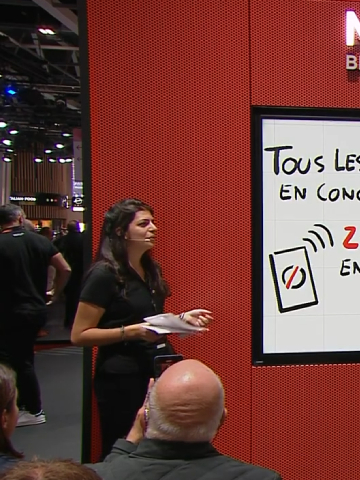-
your country
Have a specific need related to mobility?
Check out the Mobilize website that shows the offers in your country. -
explore Mobilize
Mobility seen as a set of services whose design starts with the vehicle, based on a technological platform! Find out about the mission and solutions of a new kind of brand.
read more -
mobility services
Whether you’re an individual, entrepreneur or professional in the transportation of people or goods, we develop customized services. You’ll find a solution perfectly suited to your needs.
read more -
battery recycling
What if an electric vehicle battery had multiple lives? Find out about all our initiatives for reusing batteries after their automotive life, thus helping to preserve resources and accelerate the energy transition.
read more -
#wearemobilizers
Our news, events, as well as articles, videos, infographics and podcasts decipher the major trends in mobility. Dive into a wide selection of content.
welcome aboard
green mobility: a growing family
Originally, the definition of green mobility was simple. It encompassed all forms of non-motorised mobility, i.e. modes of travel that depend on physical activity. It was then broadened to include all forms of mobility that are alternatives to the private car.
Green mobility therefore includes active forms of mobility such as walking and cycling. It also includes innovations stemming from electric mobility, such as battery-powered bicycles, electric scooters, unicycles and hoverboards. In these cases, the driving energy is not provided solely, if at all, by physical effort. Today, new forms of mobility of sustainable transport such as car-sharing and car-pooling are also part of green mobility.
What do they have in common? Compared with the private car or thermal public transport, they reduce greenhouse gas emissions and pollutants when driving… as well as noise and odour pollution. Green mobility and sustainable mobility, also called “eco-mobility” are one and the same. Not to mention the fact that active mobility is also good for your health, helping to rebalance a lifestyle that is often sedentary.
sustainable transport and short journeys: the ideal marriage
Less pollution and less noise. It’s everything city dwellers can dream of, especially in city centres and narrow streets that are rapidly becoming congested with car traffic. Sustainable transport, whether active or electric, is ideal for covering short distances. The city is therefore their most obvious playground. City dwellers use green mobility mainly for journeys of less than 2 kilometres. They make it possible to get from A to B more efficiently than by car, because they avoid many of the problems of traffic jams and parking.
Beyond this short average distance, the public transport network in the city is efficient enough for you to opt for the bus, metro or tram. Green mobility therefore complements public transport. And their uses can even be combined: it’s not unusual to see someone getting on the bus with an electric scooter slung over their shoulder.
new forms of individual mobility: a cohabitation to be invented
It’s not always easy to reconcile these different modes of transport. On pavements, walking remains the most widespread form of green mobility. However, pedestrians have to share this precious space with rollerbladers, skateboards and motorless scooters… As for cycle paths, they are no longer used only by bicycles. They also include all kinds of electric vehicles (scooters, hoverboards, gyropods, monowheels, light mopeds, etc.).
Safety concern is a corollary of the boom in these “personal mobility devices”, as this new form of individual sustainable transport is sometimes mislabelled as “soft mobility”. To avoid an increase in the number of accidents, electric mobility devices in built-up areas should only be used on cycle paths and by drivers aged 12 or over. Outside built-up areas, they may be authorised on roads with an 80km/h speed limit, in which case the user must wear a helmet, reflective equipment and ride with the parking lights on.
green mobility and more demanding journeys: a response for every need
While many city dwellers are happy with active mobility and personal mobility devices, these solutions are not suitable for everyone, or for all uses. Must you catch the 8.10am flight loaded down with big suitcases? Need to bring home the furniture you’ve just bought? Having trouble walking? The private car is no longer the only solution for these special cases.
For journeys within the city or to the suburbs, other mobility services are taking over, such as taxis and chauffeur-driven cars, or car-sharing vehicles. Zity by Mobilize, the 100% electric car-sharing service, is present in the major cities of France, Spain and Italy. Its mobile application and free-floating access (i.e. no pick-up or drop-off stations) mean that anyone can find a vehicle close to their point of departure, and park it close to their point of arrival after use.
People who need to travel longer distances or to places with less public transport can also find alternatives to the traditional pattern of owning a private car. Away from the major conurbations, car-sharing take the form of short-term rental services, such as Mobilize Share. And let’s not forget car-pooling, which can be arranged efficiently for commuting to work, as well as for more exceptional and longer journeys.



